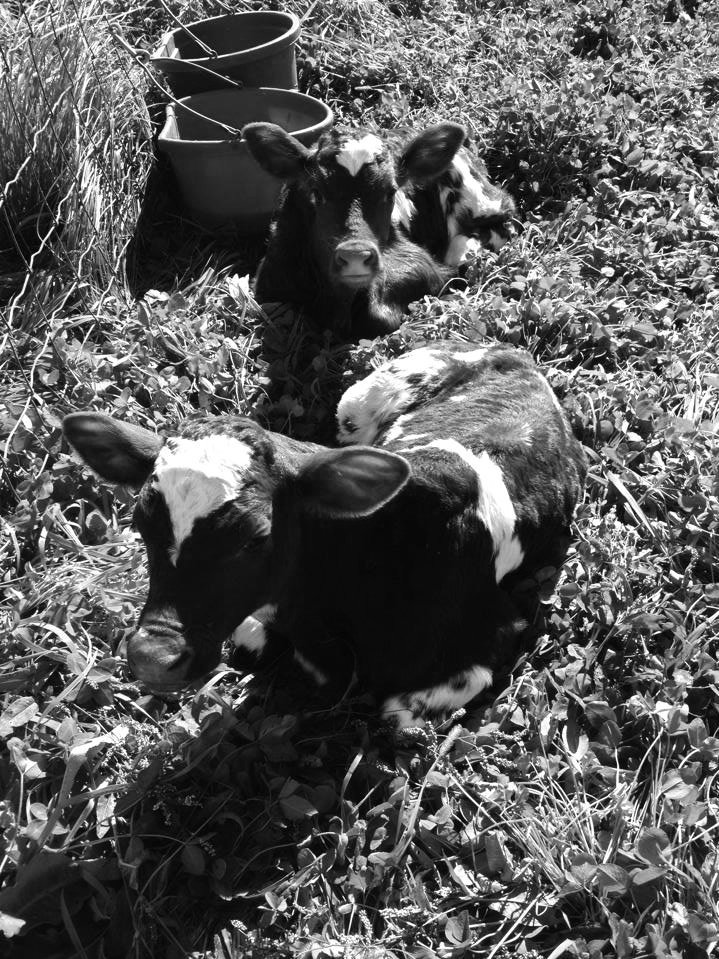Draft Power
Meet Cedar & Clay, our Red Durham Shorthorn Oxen.
They’re busy in the winter pulling out firewood and fence posts from the woodlot, and in the summer, we use them in the vegetable fields to cultivate one-row crops like cabbage and celeriac, to hill and dig potatoes, and do some light harrowing and plowing. Their weight is easier on the soil, and allows us to do tasks like clear brush in wet spring pastures where a tractor could get stuck and do damage. Their size and nimbleness allows them to go where a tractor can’t, like sowing cover crops in-between tall one-row crops such as corn or kale. Tractors are still pretty efficient at doing a lot of work, and we don’t plan to be a completely draft-powered farm, but it feels good to work with a talented, athletic animal when we can, instead of a loud, stinky, diesel-guzzling machine. With their calm and steady demeanor, Cedar & Clay are a hard-working, appreciated part of the crew.
Draft Power
Meet Cedar & Clay, our Red Durham Shorthorn Oxen.
They’re busy in the winter pulling out firewood and fence posts from the woodlot, and in the summer, we use them in the vegetable fields to cultivate one-row crops like cabbage and celeriac, to hill and dig potatoes, and do some light harrowing and plowing. Their weight is easier on the soil, and allows us to do tasks like clear brush in wet spring pastures where a tractor could get stuck and do damage. Their size and nimbleness allows them to go where a tractor can’t, like sowing cover crops in-between tall one-row crops such as corn or kale. Tractors are still pretty efficient at doing a lot of work, and we don’t plan to be a completely draft-powered farm, but it feels good to work with a talented, athletic animal when we can, instead of a loud, stinky, diesel-guzzling machine. With their calm and steady demeanor, Cedar & Clay are a hard-working, appreciated part of the crew.

To curious folks out there, this is the run-down on what an "Ox" actually is:
A male bull calf is born. It becomes a steer when it’s castrated. It’s called a working steer when it’s trained. And when a working steer turns four years old, it’s an honest-to-goodness ox.

In training, the five basic commands are:
Get Up, Whoa, Back, Haw (to the left) and Gee (to the right). They are also learning fancy things like stepping sideways. Sometimes, for cultivating, they work alone in a single yoke, but for pulling heavy loads they work together in a double.









